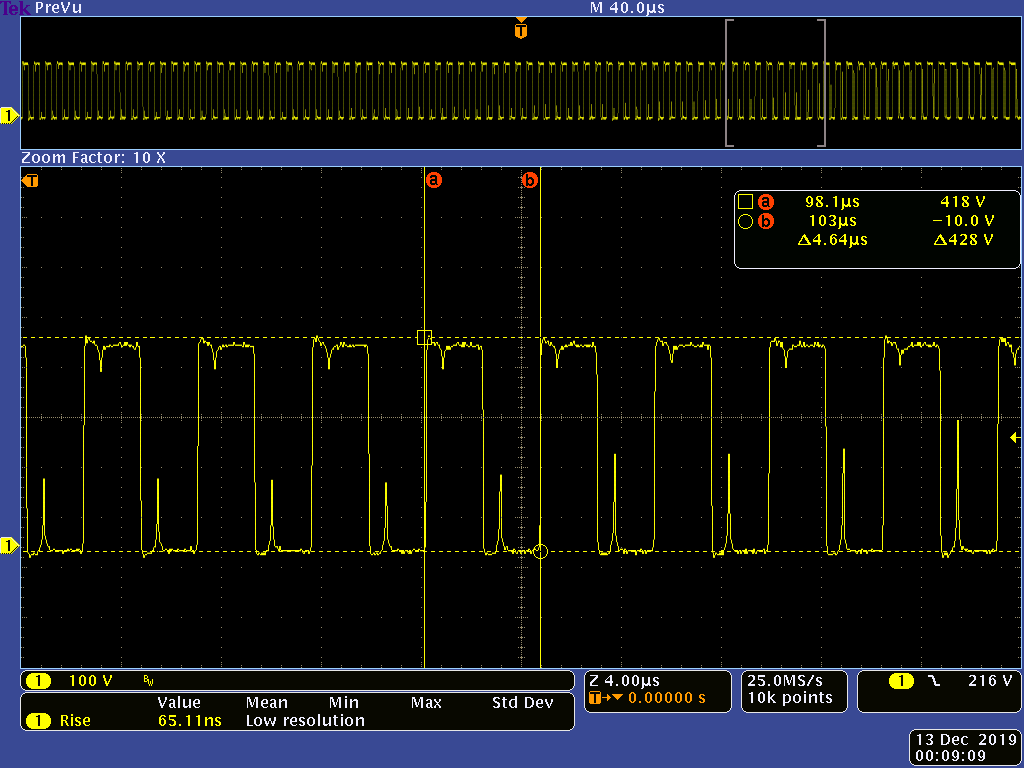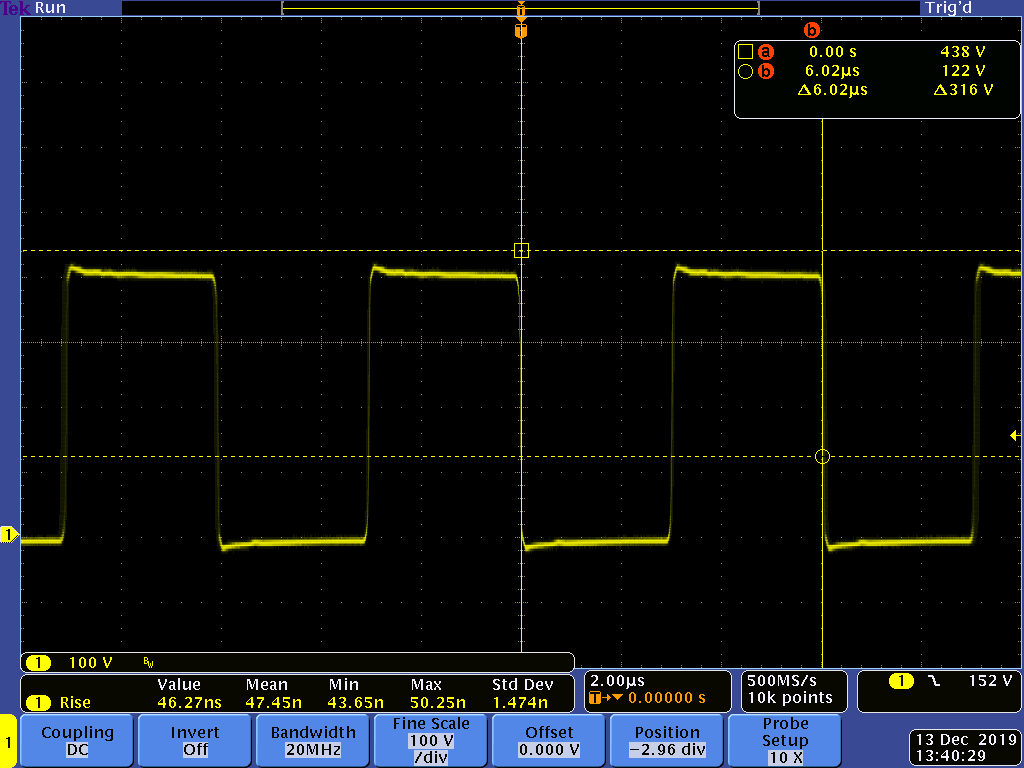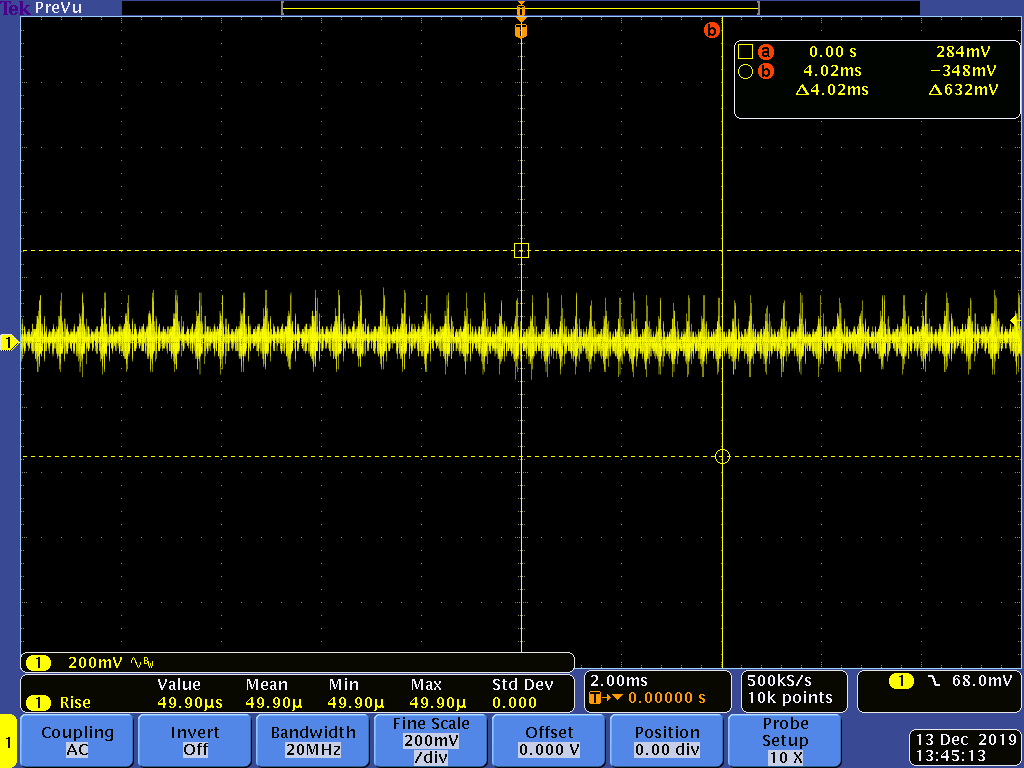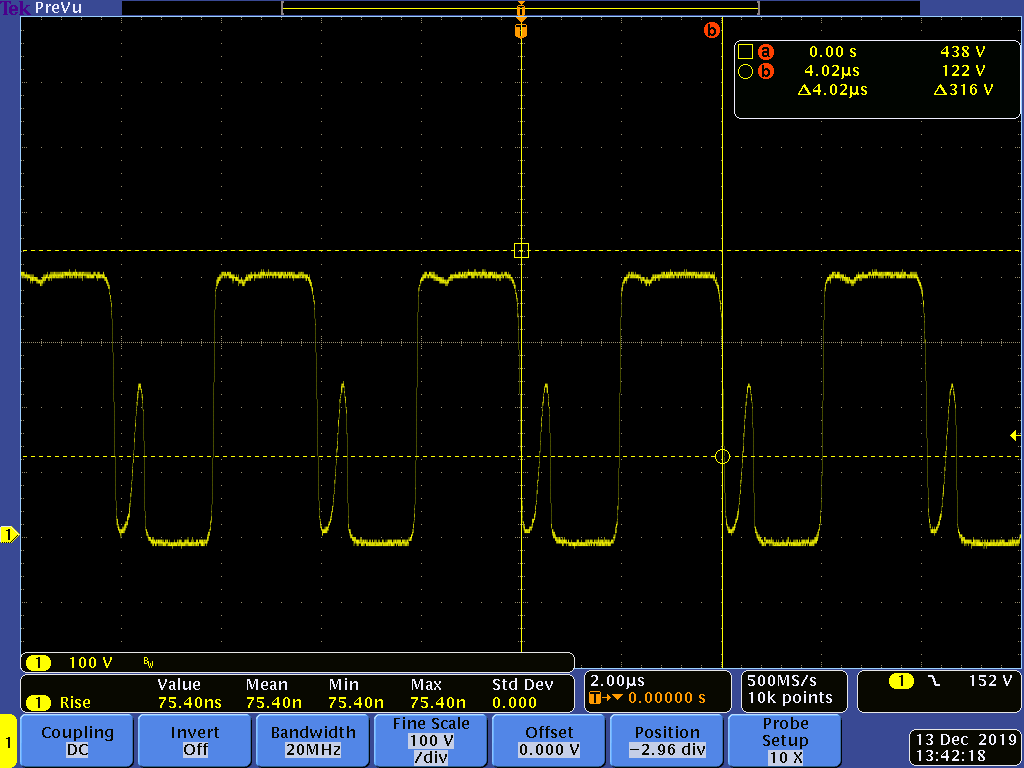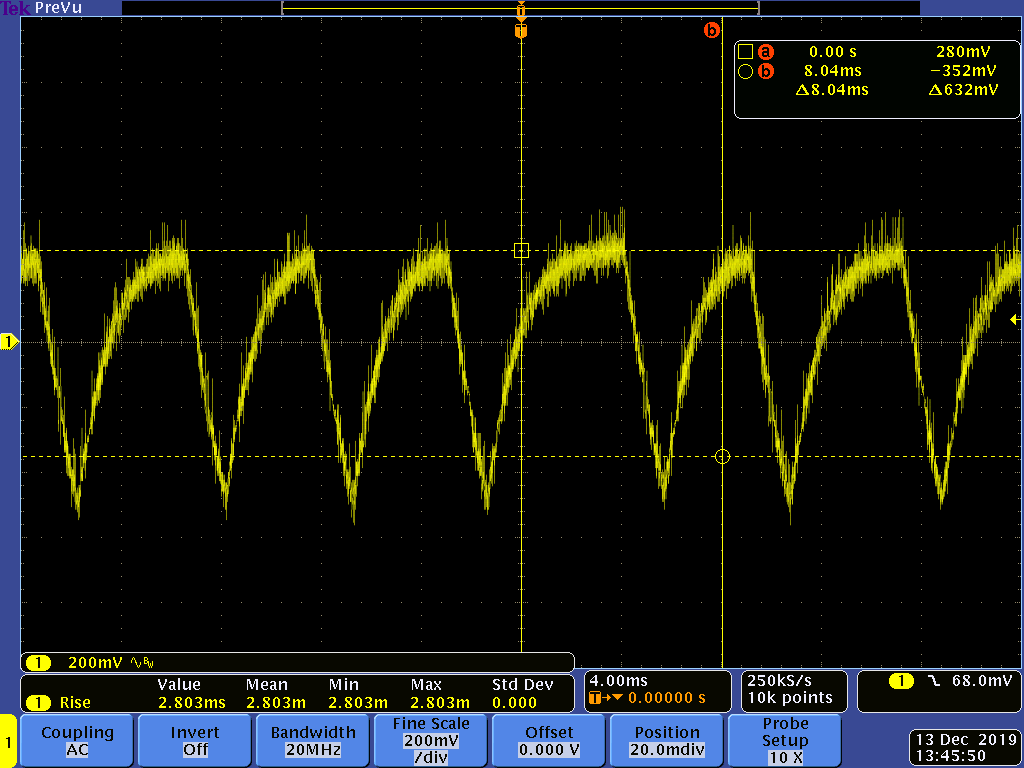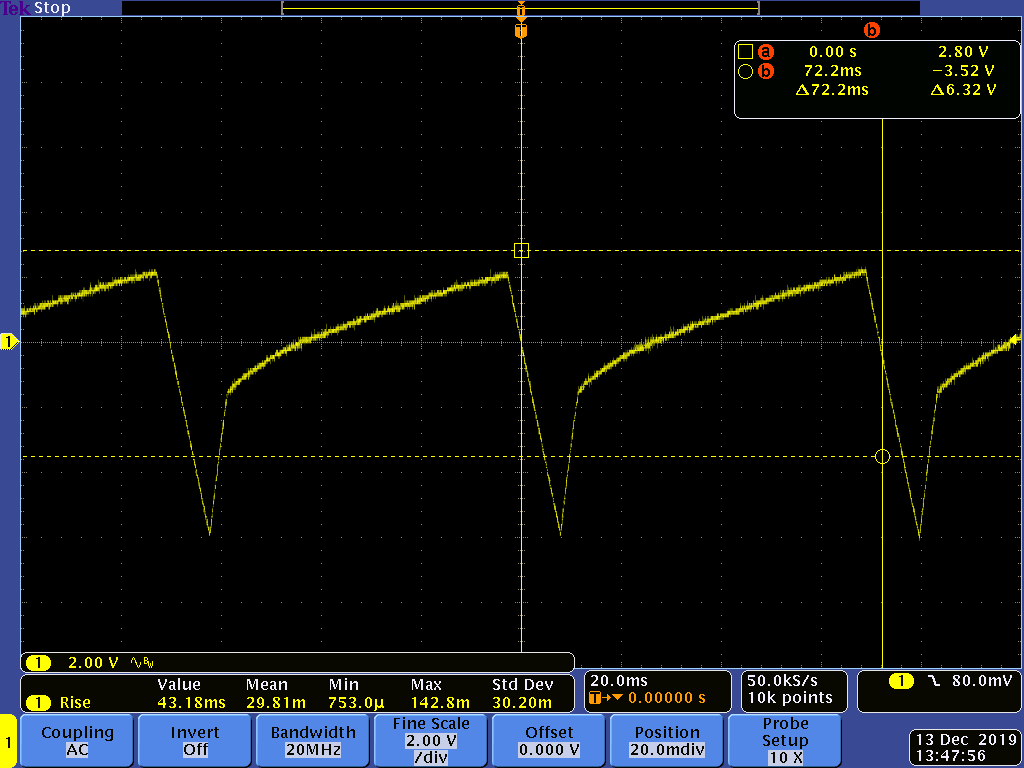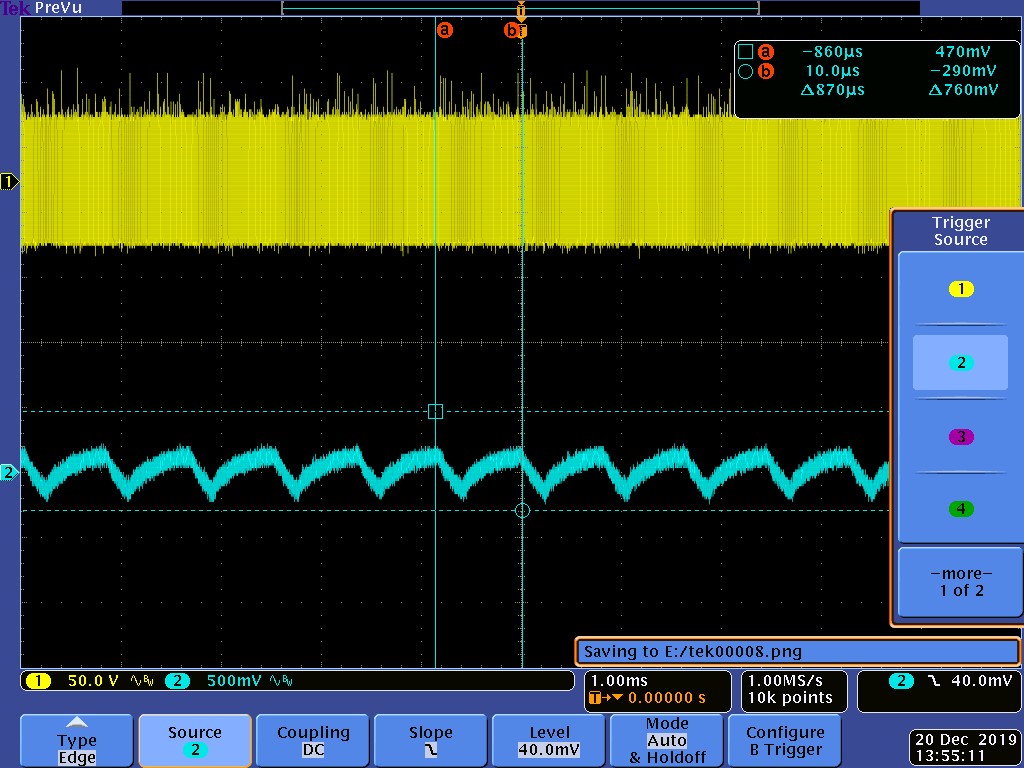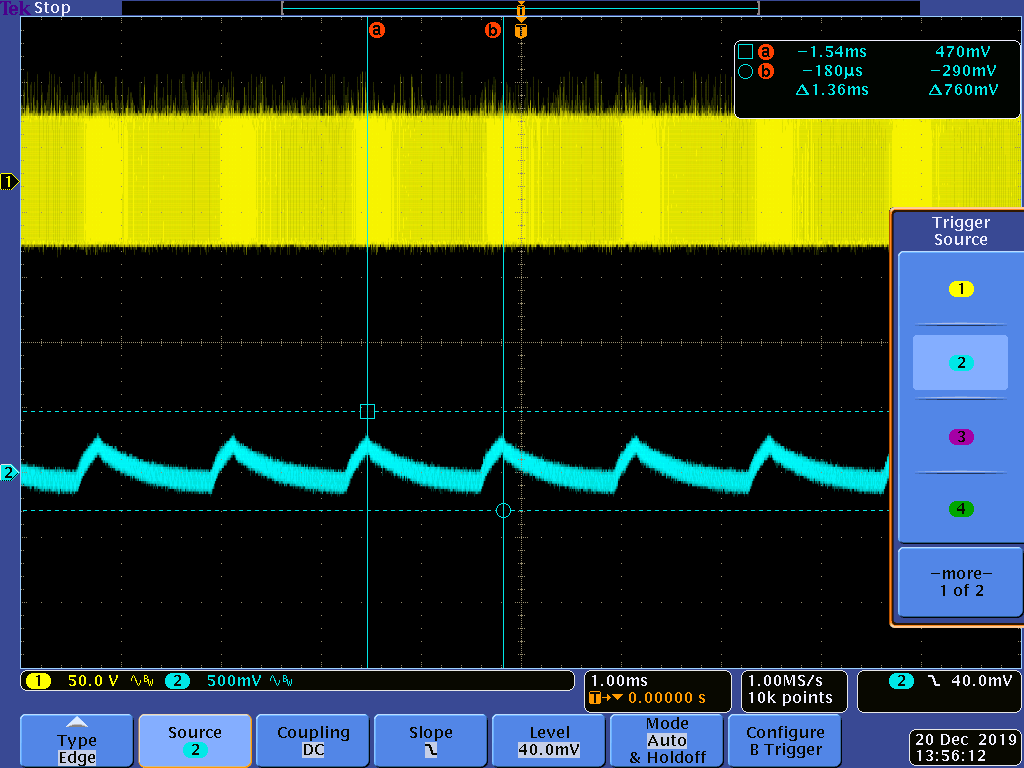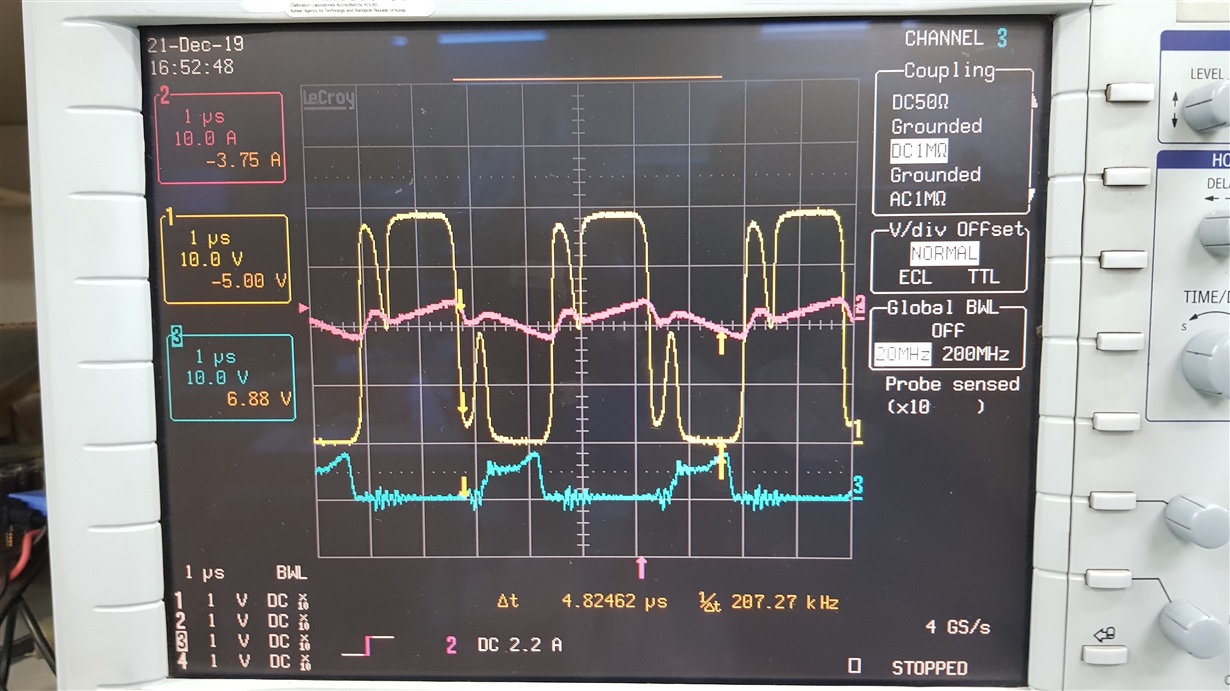Hello.
I am testing a 2kW LLC converter using UCC25600. The following waveforms appear during the test with a variable output voltage in the range of 43V to 56V.
In 54V operation, it is designed to enter burst mode at about 1A.
The following waveform is generated near 43V / 12A.
Is the waveform a problem for the LLC resonant circuit?
Or is it a problem with the dead time or feedback circuit?
Please review.
Best regards.



